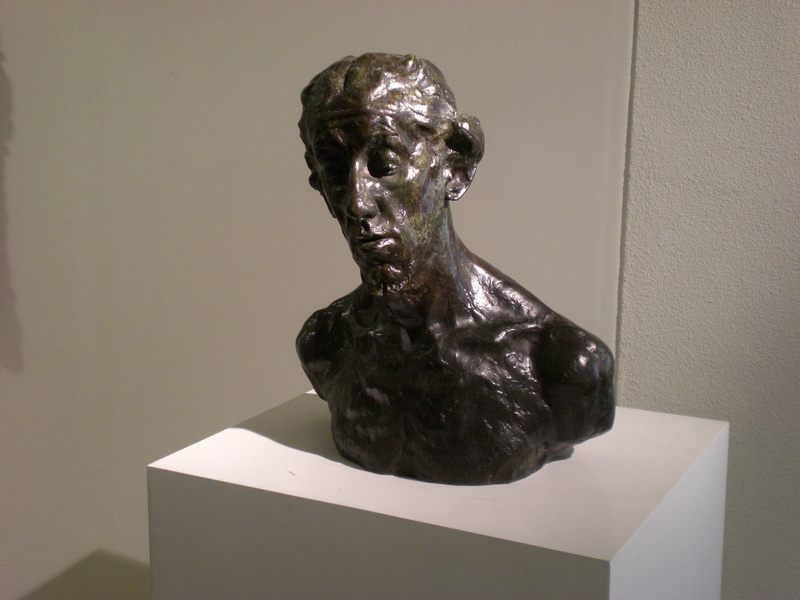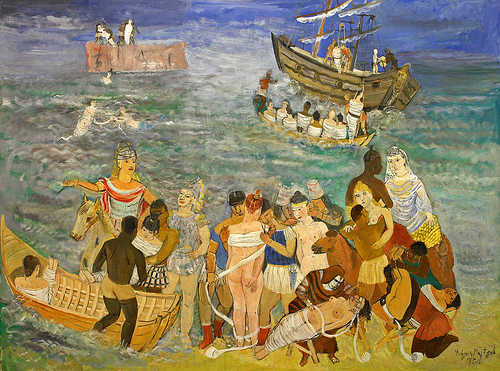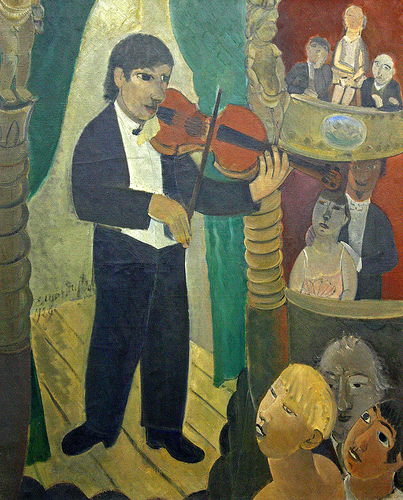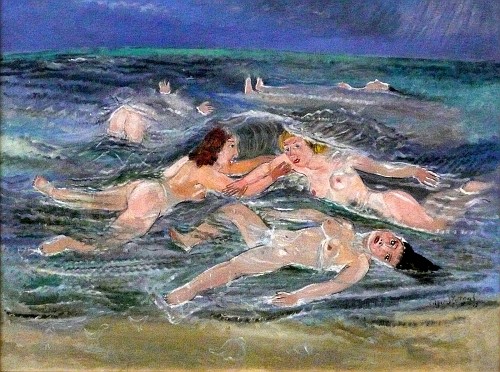<Back to Index>
- Entrepreneur Ferruccio Elio Arturo Lamborghini, 1916
- Painter Edgard Tytgat, 1879
- Commander of the Korean Navy Yi Sun-sin, 1545
PAGE SPONSOR
Tytgat grew up in
Bruges and Brussels. From 1897 he studied at the Academy of Fine Arts in Brussels. He was influenced by
Fauvism and
Post Impressionism.
Like many of his Flemish colleagues Tytgat initially painted under the influence of
Paul CÚzanne, Pierre Bonnard
and Ambroise Vollard in
impressionistic
style.
Only after the
First World War
he developed the style with which he has become known.
Tytgat joined the
Fauves Brabant
who had united around
Rik Wouters.
During the First World War he lived in exile in
London.
Then he settled near Brussels.
His painting technique evolved into a more personal, the
expressionism
and popular prints from the 18th and 19th century - inspired style.
Tytgat favorite subjects were the
circus,
fairs
(especially carousel),
nudes and interiors.
His subjects he found in his immediate vicinity: Brussels,
Nivelles
and later in Saint - Lambert, where he lived from 1924.
In the style of Tytgat the influence of primitive folk art is evident.
At the end of his life he turned away from the popular topics and he painted more fantasy - like scenes.
From 1920, Tytgat joined Flemish expressionists of the group around the magazine
Selection.
His work from that period shows the influence of
Gustave De Smet.
Besides paintings, Tytgat many etchings, woodcuts and book illustrations, for which he sometimes wrote his own lyrics.







